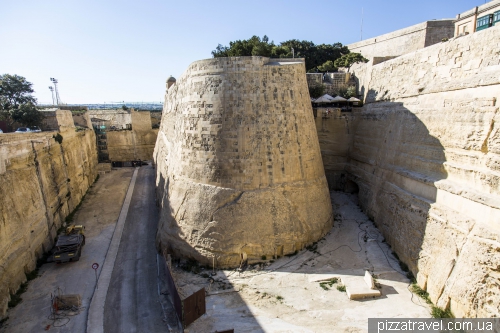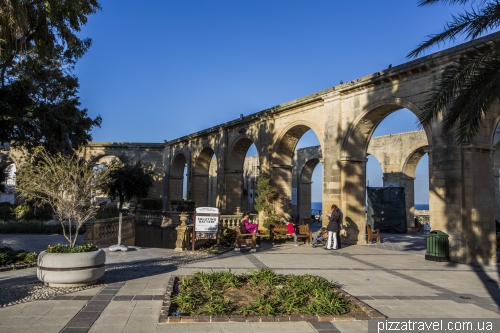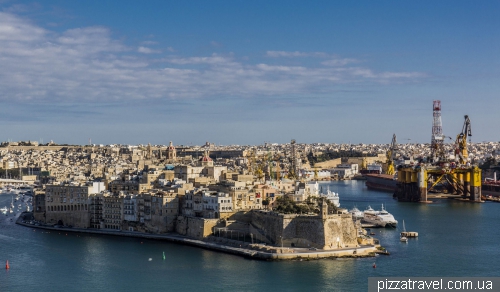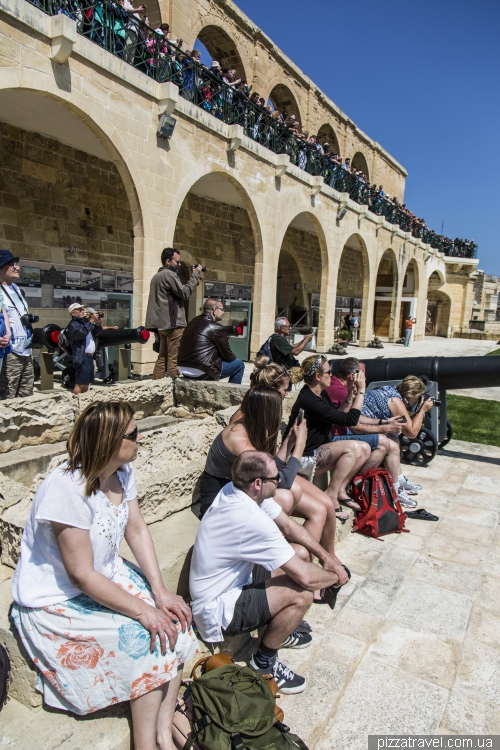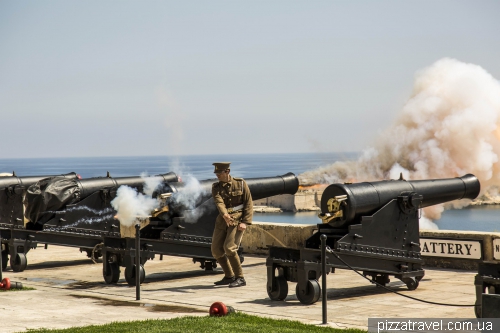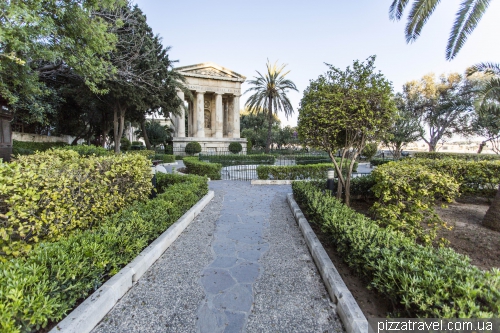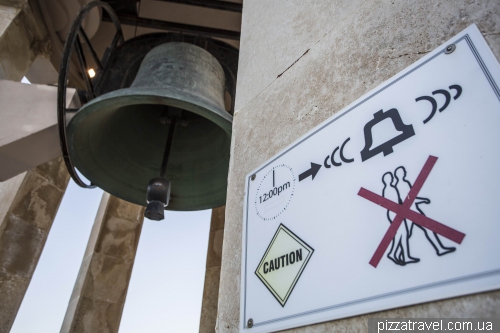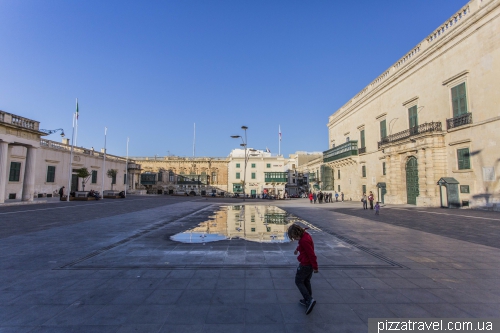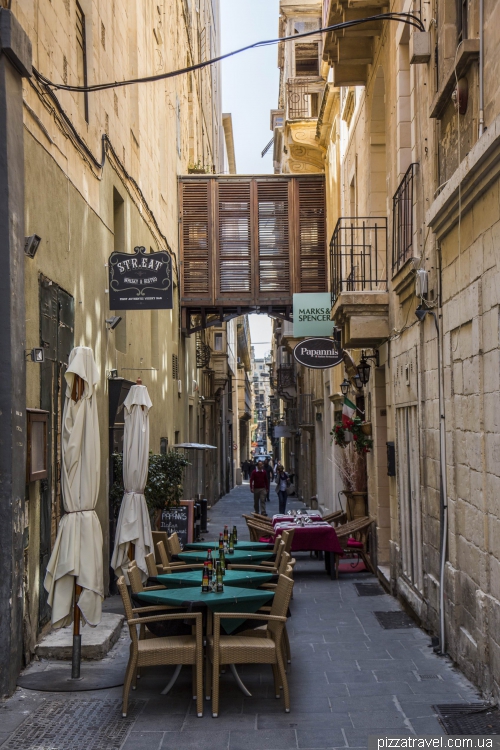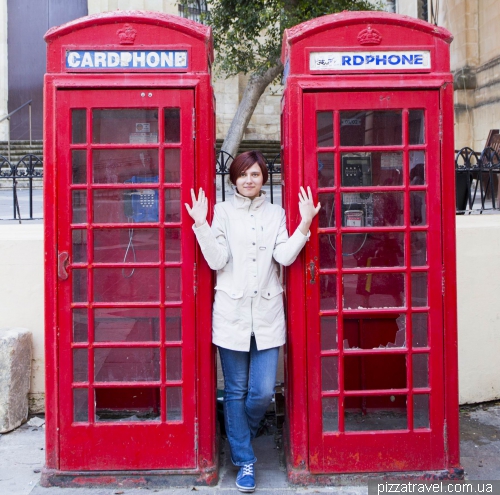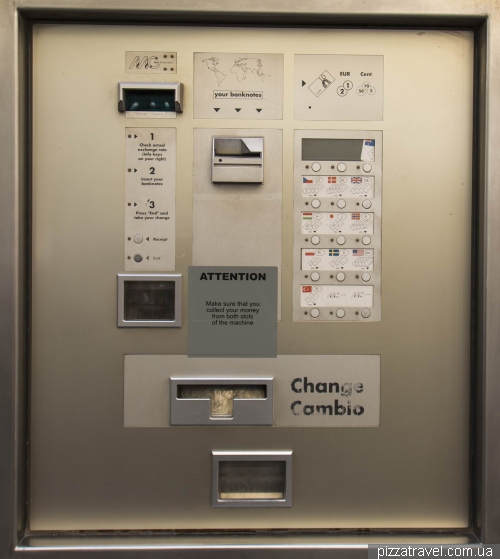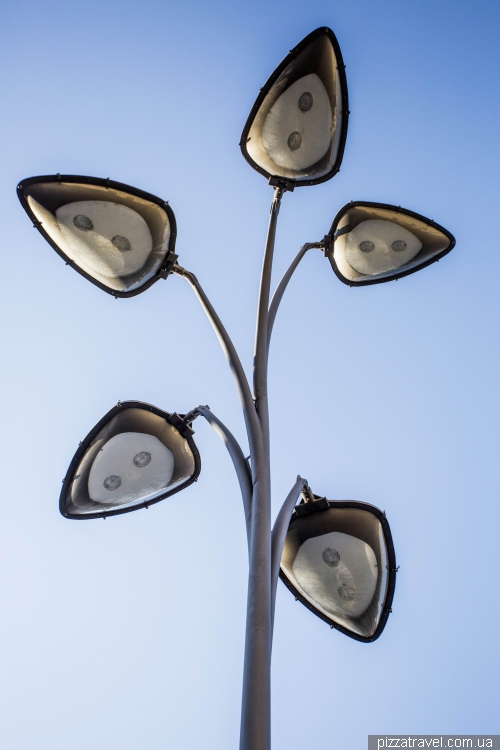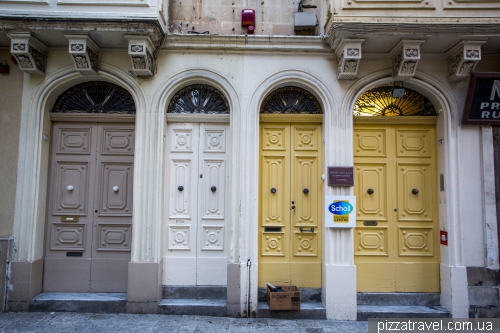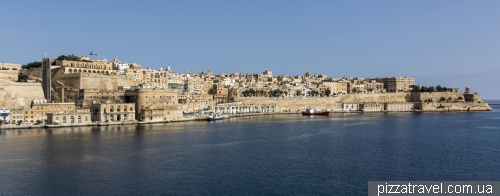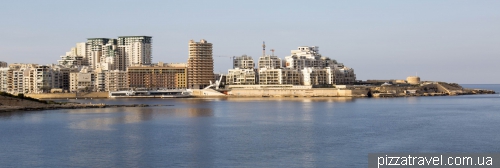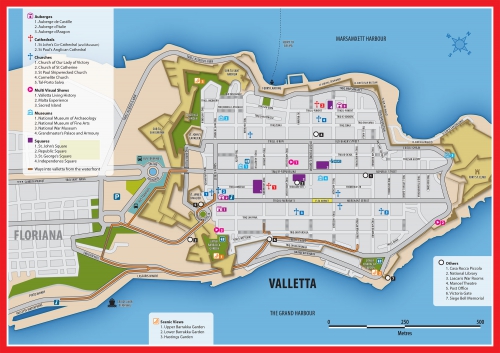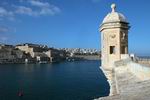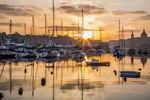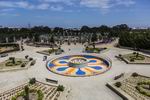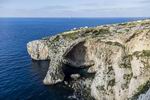The unique location of Valletta is only visible from above. Huge bays on each side are very convenient for ships and it is not surprising that this place was the first habitable on the island.
The history of the city began in 1566. Even before the Frenchman Jean Parisot de la Valette became Grand Master of the Order of Malta and was named governor of Malta. In 1565 Turkey sent a squadron against Malta with a 35000 army. De la Valette headed defense and repulsed the attack of the enemy. The capital of Valletta was named in his honor.
Defense lost quite a lot of defenders, so it was decided to rebuild the city and significantly strengthen it. Were constructed enormous walls that can be seen today at the entrance to the city through the main gate.
Street of the Republic, the main in the city, received its name in 1974, after Valletta was officially recognized as the capital of an independent Malta. It is always full of tourists, while other streets mostly empty.
Valletta is one of those cities where you don't need a map. You can come here and get lost for a whole day. There are several viewpoints in the city, the most famous of them is the Upper Barrakka Gardens.
It offers the best view of the towns in the southern part of Great Harbour.
Passengers from cruise liners rise to this viewpoint with a huge lift.
At 12 and 16 hours every day on the ground in front of Barrakka gardens shot gun. Saluting Battery has stood here for hundreds of years. You can watch the shot from the balcony for free or from the site near the guns for 3 euro. Here you can see also a lot of interesting historical photos.
On this side of Valletta, closer to the sea, there are also Lower Barrakka Gardens, which are almost free of tourists.
This is the view from them towards the Upper gardens.
Near the lower Barrakka Gardens is located Siege Bell. Ten-ton bronze bell was erected in honor of the British and Maltese people who died during the Second Great Siege of Malta in 1940 - 1943 years. The monument was opened by Queen Elizabeth II and President of Malta.
Under the bell is curious picture, which shows without a word what to do.
Central Square of Valletta is pretty deserted. There are no restaurants here and only children are playing with a small fountain. Few attractions can be found here: the Armory, the Main Guard, the Grandmaster's Palace & the State Rooms - the residence of the president and parliament (find here info about opening times and entrance fee).
Cathedral of St. John, Valletta's main attraction, was built by the Knights in 1573-1578 years. Surprisingly, it's not easy to find it. If you look at Valletta from afar, it is logical to assume that this is the large dome.
But no, near a large dome you will find the Manoel Theatre (tour information here). And at the Cathedral of St. John has no dome. The entrance is on the main street of the Republic, between Palace Square and the main gate. The cathedral is very richly decorated with paintings of famous artists, almost all Grand Masters are buried here. The pearl of the collection is a huge painting by Caravaggio "Beheading of St. John the Baptist" (1608).
More photos of Valletta
Typical street
"British" phone booths
Exchange machine
Bicycle parking
Lantern on the Palace Square
We have written a separate article about balconies. Nevertheless, there are many other absolutely unexpected, but very nice objects here, such as doors or door handles
Church of St. Catherine
View of Valletta from Senglea
Very long ladder
Pier, where ferries depart for Sliema
View of Sliema from the walls of Valletta
The same map in PDF can be downloaded here.
Getting to Valletta: By bus X4, X5, X7 from the airport (schedule). This company http://www.virtuferries.com/ operates ferries from Italian Pozzallo and Catania.


